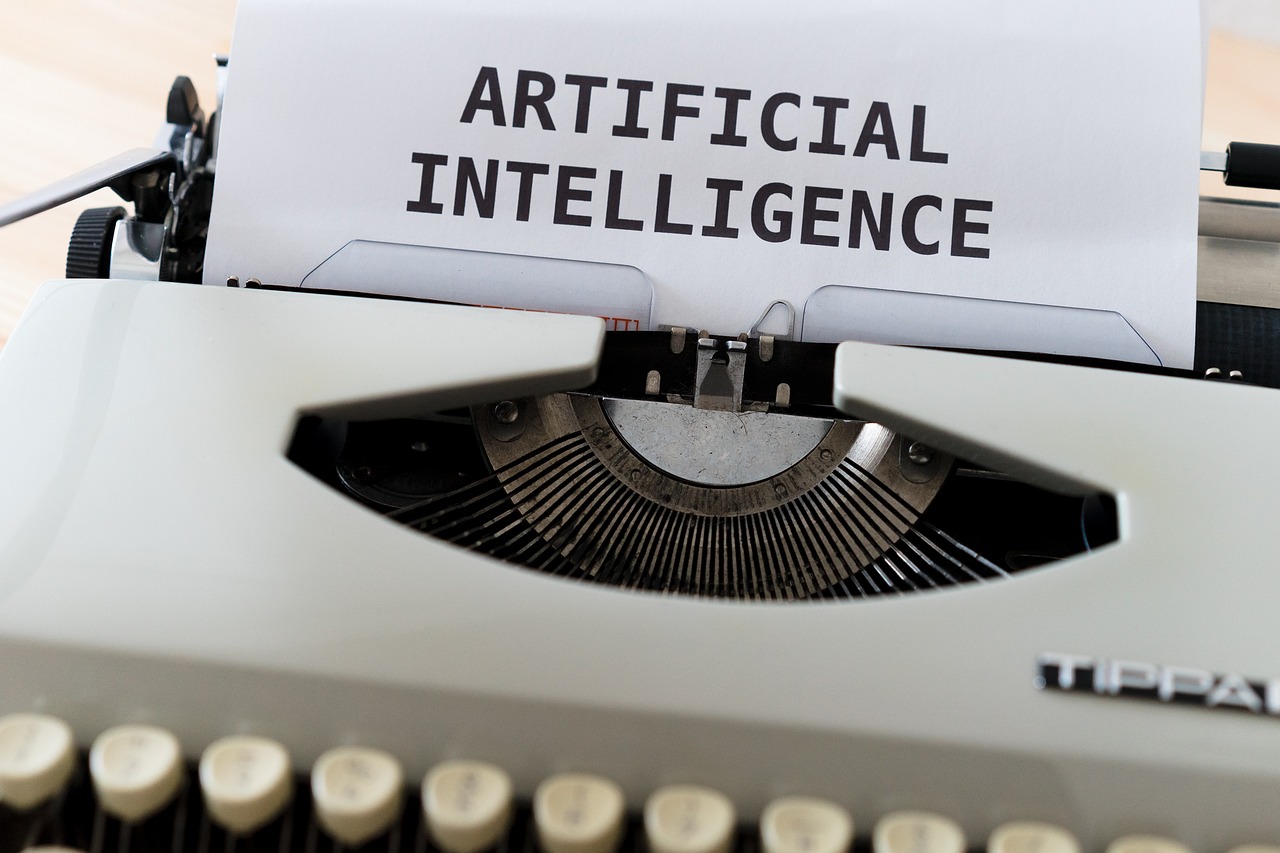AI & B2B Marketing
Five considerations for B2B managers to think about when formulating AI strategies.

Look just about anywhere and you can find reporting and commentary ascribing the rise of artificial intelligence (AI) tools like ChatGPT, Perplexity and Claude and how they are rapidly taking over the world. Their entry onto the global scene has been rapid and impactful. Indeed, few business-related conversations over the past couple of years did not include a “can we apply AI here?” remark.
Some of the benefits are straightforward and easily understood: through one lens, AI is more like the next generation of search engines and tech-fueled automation. Not unlike a dozen or more trends that preceded it — think: cloud computing, sustainability, 3D printing, augmented reality, blockchain and Web 3.0 — some had great, lasting impact (cloud computing) while others fizzled or are still gestating (augmented reality) and still others were influential but ultimately did not live up to the hype (blockchain).
Where AI ultimately fits in this pantheon remains TBD. What’s real and needs to be addressed by B2B managers who are updating their playbooks is the extraordinary hype cycle accompanying it, the impact on how non-marketing executives think about the trend (anything to reduce headcount is typically embraced), and — most practically — how to integrate the technology into day-to-day operations to improve performance. What we know for sure: AI impacts B2B marketing both on the audience side of the equation, in terms of how we’re able to reach them; and also on the operations side, where new AI-fueled tools are abundant.
It’s alot to process. Here are five of the most important considerations for B2B managers to think about when formulating their AI strategies.
- VOLUME. Google processes 15 billion searches every day and ChatGPT processes 40 million. That’s 375X. The Microsoft/Bing search engine processes 900 million inquiries every day, a 22:1 ratio. Are AI-related (think: ChatGPT, Perplexity, Gemini) growing aggressively and taking market share from Google and Bing? Absolutely, especially among the 18-24 year old demographic, at about 10-15% share currently. But they are not overtaking the legacy search engines anytime soon.
These days I’m thinking that AI’s closest comparable is the electric vehicle (EV) category. The EV market tripled in size between 2020-2024, is innovating in all kinds of new and exciting ways, and seems poised to represent the future of most or all transportation — but still only captured about 10% of new automotive sales last year. Does that make it any less exciting and interesting? No. Do ICE (internal combustion engine) vehicles still represent the lion’s share of the category? Yes.
Takeaway: plan for AI and its impact on how prospects find your business but don’t even think about abandoning the most important B2B marketing lead generation tools in the toolbox such as email, search engine and social media marketing; these are where B2B shoppers spend most of their time. - NICHE. Most of the marketing and advertising industry orients toward B2C activity and not B2B and for good reason: consumer companies spend ~20X more on advertising, and the market chases dollars. But this also means that many best practices and latest-and-greatest technologies aren’t often built for B2B but get shoehorned in as an afterthought.
This is less the case today than a decade ago — the B2B marketing category has exploded since 2015 — but the B2C digital ad market is about $700 billion globally while B2B is $40 billion so it understandably gets more attention and investment. So B2B managers need to be prepared for questions from colleagues and stakeholders who are being bombarded by AI messaging in their consumer lives and expect a seamless transition of the tech in their professional lives.
Takeaway: ignoring the emergence of AI or the legacy platforms like Google or LinkedIn isn’t an option for B2B managers and we need to be prepared for everything coming our way; on the upside, disruptive conditions can be ideal environments for testing new tactics that have been on the burner like Reddit and Bing. - EMBEDDED. Digital advertising — comprised of search engine, social media, programmatic, and sponsorship marketing tactics — in B2B overindexes with SEM/PPC activity because of its overall effectiveness and ability to target low-funnel buyer behavior. Brand building is just as important in B2B as in B2C, but the lion’s share of that kind of support is done via sales forces, events and direct outreach. Very large companies — think Fortune 1000 — are able to use digital tactics to move the brand recognition needle but it takes time and investment, and many SMB B2Bs just don’t have the heft to consider those programs.
But search engine and pay-per-click advertising fit B2B like a glove. And these tactics involve significant usage of AI, if only because the big platforms like Google Ads, Microsoft/Bing Ads, and LinkedIn Ads were early adopters and it’s difficult to use their systems without relying on some baseline level of AI (or machine learning).
It’d be a bridge too far to say that paid media professionals have been on the frontlines of AI for years, but the technology has been embedded in the tools for awhile now so it’s not having as big of an impact as it is with, say, content marketers, who are in the crosshairs of AI these days.
Takeaway: managers reporting on how the digital advertising team is incorporating new AI into its operations may have more to report on than initially assumed. - EVOLUTION. Call it responding to market conditions or using de facto monopolistic powers to bend the market to their will, but most of the largest companies affected by AI are responding aggressively from multiple fronts – business models, investments, product features — and directing their jaw-dropping resources at the challenge.
Example: representatives from both Google and Bing have stated that normal SEO works to get into AI overviews. Whether this is the reality today or will be soon due to algorithmic retrofitting doesn’t really matter — Google and Microsoft combine to represent five trillion dollars in market capitalization and are going to do whatever is necessary to protect their turf. Downplaying AI’s impact on the increasingly cutthroat SEO category – no matter how true it may be – is an effort to tamp down the AI mania.
And there’s also the persistent freemium-style consideration to consider. Software companies give away products or features all the time in pursuit of new markets or to build competitive barriers. The most widespread examples are consumer-first companies like Spotify or Canva that offer a modified version of the product for free but require a subscription for full access.
Tech giants like Google and Microsoft give away enterprise grade features like Google Analytics and Teams — one to make it easier to sell advertising and the other to make its integrated solutions work easier with non-Microsoft shops. These are the high profile examples we know about. The frequency of behind-the-scenes negotiating that goes on between multinationals and their enterprise software vendors involving freebies is almost impossible to calculate.
Takeaway: the biggest martech vendors will almost certainly find a way to navigate AI successfully but B2B marketers can’t afford to take a wait-and-see approach; using a measured, evaluate/test/learn/repeat methodology to adopting AI is the way to go, while keeping close watch on Google, Meta, Microsoft/Bing, and LinkedIn. - AUTHENTICITY. Depending on the source, the topics of authenticity and trust in B2B commerce is either at an all-time low or becoming increasingly important. In an environment rife with misinformation and issues like FOFU becoming pervasive among B2B buyers — which is nearly in direct conflict with innovation — it’s a juggling act.
On one hand, B2B marketers are being asked to produce content at a better, faster, and cheaper rate. And AI is purpose built for that kind of job — pumping out blog articles, social media posts, and email newsletters. But the output can lack a point of view, or provide a point of view that is overly automated – not ideal.
On the other hand, B2B buyers are increasingly sophisticated and wary of vendor claims absent irrefutable proof. Almost by definition, this increases the importance of credibility and relationships, and that’s what LinkedIn is betting on. At Cannes, the company’s head of innovation told audiences, “It’s not enough to be the best or the cheapest, you have to be the one that ‘people like me’ say is safe.” And that’s tough to do without authenticity and a credible cadre of referrals.
Takeaway: deep-pocketed companies with the resources to produce high quality content won’t soon risk marketplace credibility by overusing AI because the reputational risk is too great; but small companies can and do use AI to produce content and to meaningful effect, in some cases, but the long term implications are TBD.
RESOURCES & FURTHER READING
- B2B Digital Marketing Case Studies
- AI & PPC Management
- Does PPC Work For B2B?
- B2B Lead Generation Ideas
- What Is Conquesting?
############################################
Tim Bourgeois is a B2B marketing strategy consultant at East Coast Catalyst and manages the PPC management services practice. Contact him at tbourgeois(a)eastcoastcatalyst.com to discuss how his team can help with B2B digital marketing strategy and lead generation initiatives.
